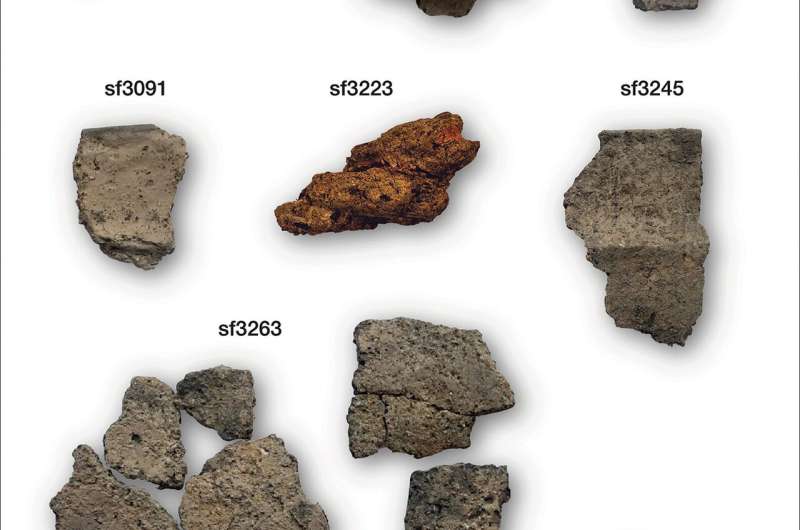Examples of sherds from the saltern (photographs by S.J. Sherlock). Credit: Antiquity (2021). DOI: 10.15184/aqy.2021.25
Archaeologist Stephen Sherlock, an independent scholar, has found evidence of Neolithic people extracting salt from seawater 5,800 years ago at Street House, Loftus, making it the oldest salt production facility ever discovered in Britain. He has published a paper outlining his findings on the Cambridge University Press site, Cambridge Core.
Archeologists have been working at the site, which is located near the town of Loftus, in the Yorkshire Moors, for many years, but it was Sherlock who made the connection between salt production and artifacts unearthed in trenches. In addition to charcoal deposits, there was a hazelnut shell and pottery, all of which was dated back approximately 5,800 years.
Salt was an important commodity for people in the Neolithic—it was used to preserve food and hides, both a necessity for making it through long, cold winters. During that time, salt was either mined or extracted from seawater. In this instance, it appears the seawater was captured in jugs from the North Sea, approximately 2.5 miles away. It would have been distilled onshore before transport to the salt-producing facility near what is now Loftus. Sherlock suggests the briny water was dumped into a pit where it was stored for use. To retrieve the salt, workers would collect a quantity of the brine using pots and heat it over a fire for up to seven hours. Doing so removed most of the remaining water. The pots full of salt cake would then be set aside to cool or would be taken to other places. When people wanted to use the salt, they simply broke the pots.
Similar salt extracting facilities from the Neolithic period have been found in several places around Europe but this was the first for Britain. It is also the oldest-known salt-producing facility in Britain—thousands of years older than any previously found. And because of where the site was situated, Sherlock suggests that the knowledge was likely brought by migrants from the mainland.
Sherlock found three hearths that were used to heat the brine in a single trench—nearby, he and others found hundreds of pottery shards. Testing showed the pottery was made in France, which is likely where the migrants came from.
More information: Stephen J. Sherlock. Early Neolithic salt production at Street House, Loftus, north-east England, Antiquity (2021). DOI: 10.15184/aqy.2021.25
Journal information: Antiquity
© 2021 Science X Network
























